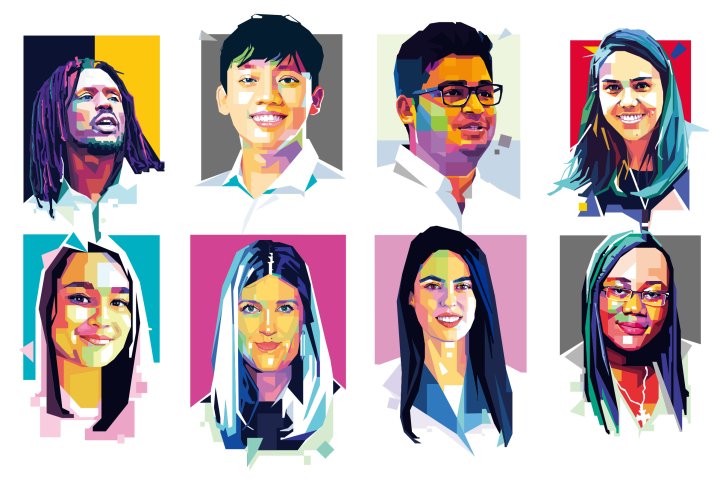Basima Abdulrahman
Sustainable architect, Iraq
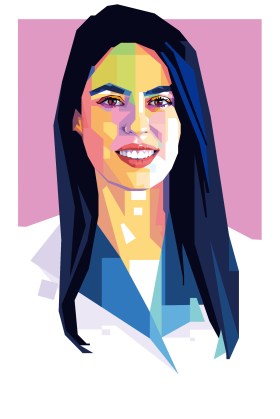 Illustrations by Denny Rahayu for TIME
Illustrations by Denny Rahayu for TIME Basima Abdulrahman was studying at Auburn University in Alabama when ISIS took over swaths of her native Iraq in 2014. As the Iraqi army, backed by a U.S.-led coalition, fought the militants, dozens of towns, including much of Mosul, Iraq’s second largest city, were destroyed.
When Abdulrahman, 32, returned home after finishing her master’s in structural engineering, she saw a silver lining in the rubble of her beloved country. “When we rebuild, we can make sure we are using the right materials—efficient in terms of water and energy consumption,” she says. “There is an opportunity because we have so much rebuilding to do.”
In 2017, she founded KESK, Iraq’s first initiative dedicated to green building, offering design and consulting services. Creating greener structures means combining the latest energy-efficient technologies and materials with Iraq’s traditional building methods.
“Indigenous practices, like building blocks made of clay, are better for the environment than cement,” she says, adding that the dome-shaped homes popular in some parts of Iraq help airflow and reduce energy consumption.
Abdulrahman wants the country to do its part to combat global warming, but its shortages of electricity and water make efficient building even more important. Erbil, where Abdulrahman lives, suffers hours of power cuts every day, and water shortages were so bad in other parts of the country over the summer that the government halted water-intensive rice farming.
The biggest challenge, she says, is a lack of awareness of sustainable design and construction in Iraq. Most people are unwilling to consider extra building costs despite the promise of long-term savings.
“They don’t think about it as a lifetime investment,” she says. “Because of centuries of conflict, they feel something could happen at any time and they would have to leave.”
Despite that, Abdulrahman has a clear vision for the next decade: building the first sustainable city in Iraq. “That is my ultimate goal.” —Rebecca Collard
Emmanuel Jal
Musician and actor, South Sudan
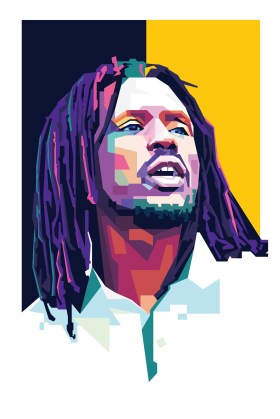 Illustrations by Denny Rahayu for TIME
Illustrations by Denny Rahayu for TIME A child soldier turned hip-hop sensation, Emmanuel Jal always knew that his remarkable tale of survival would someday serve a larger purpose. He just didn’t know what it was.
Now, after six albums, a TED talk, an award-winning biography and a starring role opposite Reese Witherspoon in The Good Lie, Jal, 39, appreciates the power of his story: a South Sudanese orphan forced to fight in a war he didn’t understand who would go on to overcome the trauma, learn to forgive and emerge stronger.
Now living in Canada, Jal is taking that reconciliation message global, teaching through his music and his advocacy that peace is something that starts from within. “A traumatized person acts on instinct; he can’t plan for the future,” he says. “But when you eradicate the bitterness and find your purpose, you can manifest big things in life.”
To encourage others to find forgiveness and move toward inner—and outer—peace, Jal has supplemented his musical messaging with a series of workshops on self-awareness, meditation and inner strength. To expand that reach worldwide, he’s building an app that uses an African-inflected approach to meditation while promoting positive habits.
Recognizing that education is one of the building blocks of self-awareness, Jal is also returning to his roots in South Sudan. He wants to rebuild the school he helped establish in the town of Leer in 2010, before it was destroyed by another outbreak of war four years later. It’s pointless to start construction before there is peace, he says, but his music—popular across the country—is laying the groundwork.
“The fact that those kids see me doing my things, it inspires them. They say, ‘This guy is one of us, and see where he is now,’” he says. “I am just here to keep hope alive that tomorrow will get better.” —Aryn Baker
Rizky Ashar Murdiono
Youth activist, Indonesia
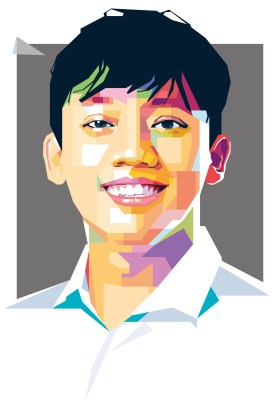 Illustrations by Denny Rahayu for TIME
Illustrations by Denny Rahayu for TIME Rizky Ashar Murdiono has always kept busy. Raised in a high-crime area of Surabaya, Indonesia’s second largest city, Rizky, now 26, spent his childhood collecting whatever odd jobs he could to pay his school fees. He was one of few people from his neighborhood to graduate from high school.
Activism helped motivate him through the hardship. At the University of Brawijaya, Rizky doubled down on organizing, volunteering and campaigning. He created a youth-diversity alliance to promote an inclusive campus, campaigned for sexual and reproductive health with Amnesty International, taught himself English and mastered sign language to mentor students with hearing difficulties.
These days, Rizky focuses on empowering youth from similar backgrounds. “Living peacefully is impossible when people have no opportunities,” he says. He just started a new job as a program associate for youth engagement at the U.N. Population Fund, where he rallies other young activists around the U.N.’s Sustainable Development Goals.
He’s also launching a project with 2030 Youth Force Indonesia, a network he co-founded in 2016. The new initiative, called Generasi Baik (Good Generation), will deploy young urban professionals to remote villages to work on economic development. The pilot is set to begin next March with three college graduates from Indonesian cities jetting off to Borneo to work with two local college graduates on environmental issues. Rizky hopes the project will address the disparities between rural and urban areas in Indonesia, which has the sixth worst inequality of wealth in the world, according to Oxfam.
“Peace is not only about conflict, it’s also about financial security and the opportunity for prosperity,” he says. In the future, he plans to get his graduate degree in development and continue working to empower poor and marginalized youth. “I want to help other youth understand that no matter their socioeconomic background, they have potential.” —Laignee Barron
Amelia Telford
Climate campaigner, Australia
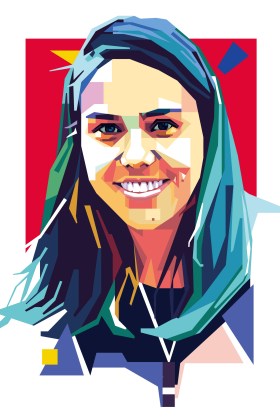 Illustrations by Denny Rahayu for TIME
Illustrations by Denny Rahayu for TIME Growing up in a coastal area of New South Wales, Australia, Amelia Telford was taught by her parents to respect the land and the people living on it. That early love of nature helped lead Telford, now 24, to her role as national director of SEED, an organization supporting climate activism among indigenous young people. “It’s our cultural responsibility that we’ve had for tens of thousands of years,” she says.
As a proud Bundjalung woman, Telford says her Aboriginal identity drives the work she does. She notes that rising sea levels and mining projects have devastated the livelihoods of Australia’s Aboriginal population and Torres Strait Islanders. “Our people often say if the land is sick, then so are we,” Telford says.
Telford wants SEED’s network of young indigenous people to support these local communities. High on her agenda are campaigns against fracking in Australia’s Northern Territory and the impending construction of a coal mine in Queensland.
Telford is hopeful about holding powerful companies and the government to account. “Surrounding yourself with good people that are fighting the good fight is what makes it all worthwhile for me,” she says. —Suyin Haynes
Samaira Mehta
Coder and entrepreneur, U.S.
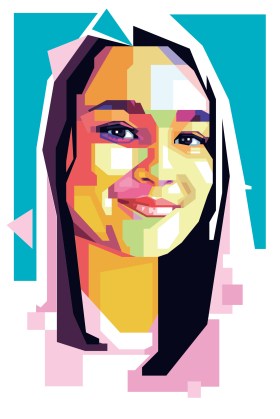 Illustrations by Denny Rahayu for TIME
Illustrations by Denny Rahayu for TIME When Samaira Mehta’s father taught her about coding one day, she couldn’t wait to tell her friends. He had shown his daughter how she could make a computer do whatever she wanted with the right commands—but at school, no one was interested. “They thought coding was pretty boring,” the 10-year-old says. “And I wanted all kids to like coding.”
Samaira, a native of Silicon Valley, decided to invent something to change that. With the help of her parents, she developed two board games that teach kids about computer science: CoderBunnyz and CoderMindz. She’s sold nearly 5,000 since the first launched in 2015, making upwards of $160,000 in revenue. And she’s become one of coding’s biggest champions in the process, hosting workshops and landing speaking gigs at companies like Microsoft and Google.
“You can tell a computer to do something for you. And you can tell a computer to do something good for everyone else,” she says. “It’s really important for kids to learn to code because coding is starting to become a crucial part of life.” It’s inside our phones and TVs and satellites, she says. It’s what powers drones and self-driving cars. (Plus, Samaira adds, with the right program, you could even teach a robot how to do your homework and your chores.)
When Samaira gives talks, the young woman of color often speaks about the underrepresentation of people like her in technology. That is a gap she wants to help close. “I want it to be equal, 50% women and 50% men,” she says. “Girls should not be scared to try something new.” And while she has spread that message at conferences and schools, Samaira has her sights on a bigger stage.
“I also want to become the President of America,” Samaira says. “Being President would give me the ability to reach out to more and more kids in the world, and continue really spreading the word and the love and the mission.” —Katy Steinmetz
Gwendolyn Myers
Peace advocate, Liberia
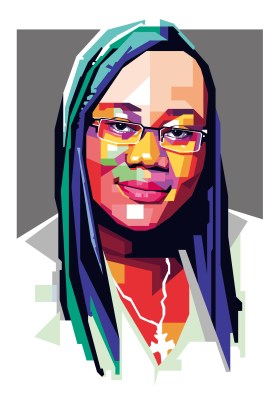 Illustrations by Denny Rahayu for TIME
Illustrations by Denny Rahayu for TIME When Gwendolyn Myers was born in 1990, at the height of the Liberian civil war, her mother couldn’t even afford a blanket to wrap her in. The fighting killed 250,000 people and involved 15,000 child soldiers, traumatizing a generation of Liberians. When peace was finally reached in 2003, the country was in ruins.
Growing up in a period synonymous with war shaped Myers’ perspective—and career. “If young people can be used to foment violence and conflict,” the 28-year-old says, “the very same young people can be used to bring about peace.” That informs her campaigns at Messengers of Peace Liberia, the nonprofit Myers founded in 2008, to promote volunteerism and peace building among young Liberians.
The lessons of post-conflict Liberia can teach global leaders a thing or two, Myers says. Having shepherded young people from civil war into civil society, she knows dialogue and partnership are crucial.
But the decade ahead presents new challenges for countries like Liberia. In an era of misinformation, a sudden rise in Internet access without a corresponding rise in education could be dangerous. With just 7% of Liberians currently online, Myers says the country—and the broader developing world—must prepare for radical change. “Of course we want everyone to have access to the Internet in the digital age,” she says. “But at the same time, what exactly are they having access to?”
The distance between today and 2030 may seem like an eternity for Liberia, which started rebuilding only 15 years ago. While the country has made major strides, including electing Africa’s first female head of state in 2005, 85% of people still live in poverty and fewer than half of children finish elementary school.
Myers sees youth engagement as essential to creating an equal society, she says. “All the conflicts we are having, we wouldn’t be having if people felt their voices were heard and respected, and they knew they were given a space that was inclusive.” —Billy Perrigo
Harry Myo Lin
Human-rights activist, Myanmar
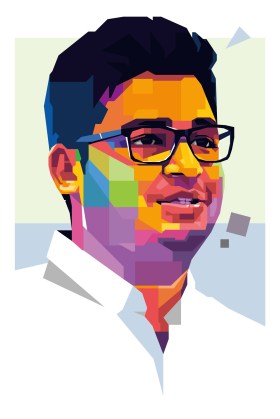 Illustrations by Denny Rahayu for TIME
Illustrations by Denny Rahayu for TIME In a country that emerged from nearly 50 years of military dictatorship only in 2010, Harry Myo Lin is a rare mediator. A Muslim from Myanmar’s Buddhist heartland of Mandalay, the 28-year-old has spent years fighting hate speech and trying to address deep grievances left from junta rule.
When riots in Rakhine state in 2012 displaced more than 140,000 people, mostly Muslims from the Rohingya minority, Harry set up a Facebook group to fact-check claims and unite activists across faiths. It attracted 10,000 people. “This was my entry to interfaith work,” he says.
In 2013, Buddhist mobs torched mosques and killed 43 people in Meiktila, a city in central Myanmar. In response, Harry co-founded an NGO, the Seagull, in 2014. Its message of interfaith dialogue wasn’t always welcome, and Harry was harassed and threatened online. “Any rumor can lead to violence,” he says.
In 2017, he left the Seagull and joined Vienna-based peace center KAICIID, working with activists to combat rising nationalism around the world. Harry became a father in August, lending new urgency to his fight.“I don’t want my daughter to face the discrimination I’m facing,” he says. Now he’s lobbying lawmakers and training grassroots activists to instill tolerance. “Everyone has our own story and our own traumas,” Harry says.
“We all need to heal.” —Eli Meixler
Beatrice Fihn
Disarmament activist, Sweden
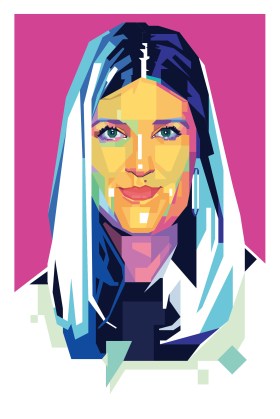 Illustrations by Denny Rahayu for TIME
Illustrations by Denny Rahayu for TIME Long before she accepted the 2017 Nobel Peace Prize for her work on nuclear disarmament, Beatrice Fihn learned war isn’t quite like it is in the movies. In the multicultural suburb of Gothenburg, Sweden, where she grew up, many of her classmates were Serbs, Kosovans, Albanians and Bosnians fleeing the Balkan war. “I couldn’t figure out who were the good guys and who were the bad guys,” she says. “It was clear that conflict was messy.”
For over a decade, Fihn, 36, has been trying to stop nuclear weapons’ entering that mess. In 2006 she interned for a nuclear-disarmament campaign in Geneva and quickly became fascinated by the global power dynamics the weapons reflect and the threat they pose. In 2014, she became director of the International Campaign to Abolish Nuclear Weapons (ICAN) and spent three years persuading 122 countries to vote for a U.N. treaty banning the development, use and threat of nuclear weapons. It was approved in July 2017.
Now that the glamour and hype of the Nobel Prize—which Fihn accepted in Oslo on ICAN’s behalf—have died down, it’s back to the daily grind of campaigning. Only 19 countries have actually ratified the treaty, and 50 need to do so in order for it to come into force. Fihn wants to hit that number by the end of 2019. “There’s a lot of bureaucratic pushing to be done; getting the right committee to sign off on the right piece of paper.”
Fihn balances the bureaucracy—working out of ICAN’s Geneva headquarters—with bringing up her two children. Raised in Sweden’s flexible work culture, Fihn is honest about the juggling required—telling colleagues if she can’t do a meeting. “It’s the workplace’s responsibility to ensure that people can do a job and have a family,” she says.
No nuclear-armed states have ratified the 2017 treaty, and critics dismiss the goal of global disarmament as idealistic. But Fihn thinks world leaders will see nuclear weapons differently by 2030. “In 10 years, I think one or two nuclear-armed states will be dismantling their stockpiles,” she says, comparing the process to the U.S.’s slow destruction of its chemical-weapons stockpile. “The key is, it won’t be something governments brag about. It’ll be a weapon on its way out.” —Ciara Nugent
